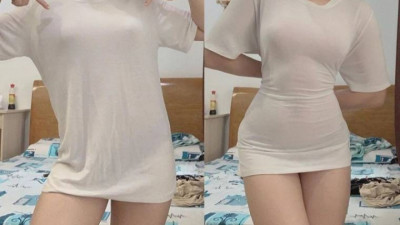SF9’s Recent Reaction To Dawon In Dreadlocks: A Reminder Of Why We Need To Keep Talking About Cultural Appropriation In K-Pop
본문
Recently, the groups participating on Mnet‘s Kingdom sat down to react to their top 3 most-watched stage performances on YouTube. However, SF9‘s reaction to their 2nd stage performance, “Mamma Mia,” raised some concerns.
In 2018, during the time “Mamma Mia” was being promoted, Dawon was seen in dreadlocks in both the concept pictures and stages for the song, leading to a fan outcry. The fans took up the issue with the group and their company, and it wasn’t long before Dawon removed the dreadlocks.
On Fleek~ pic.twitter.com/jStImjeDJC
— SF9official (@SF9official) March 7, 2018
For Mnet’s reaction video, SF9 watched a stage performance in which Dawon’s hair was still styled in dreadlocks, as it was prior to his hairstyle change. When he appeared on screen, multiple members laughed at his appearance, and Zuho said that it looked like Dawon had “a tarantula on his head.” Additionally, the editors of the video called the hairstyle “messy.”
Your browser does not support video.
While comments and reactions like SF9’s aren’t always malicious, they often belie a lack of understanding by the idols and their company regarding the sensitivity of this issue. Additionally, reactions such as these, even if they were completely innocent, serve to reinforce the existing perception in Korean popular culture of Black hairstyles as “messy” and “weird.” Dreadlocks are reduced to a “hip” hairstyle by Korean pop culture and are seen as more of a “concept.”
There is a huge lack of understanding of the history and misconceptions surrounding the hairstyle. The primary reason why dreadlocks are worn is to protect the hair, as it is the process of “permanently” twisting hair into locks to promote hair health and growth.
Their misconceptions have much greater consequences than they may realize. In the U.S., these same misconceptions lead to discrimination in many different ways. Studies have shown that Black individuals wearing their hair in natural hairstyles–such as curly afros, dreadlocks, twists or braids–are less likely to get job interviews and have even been fired for it.
In the 1970s, “grooming policies” in the U.S. enforced hair discrimination in schools and workplaces. This issue is still being fought against: as of this year, only 7 states prohibit discrimination against natural hair in schools and workplaces, and there are still 43 states that can legally reject a child from school or deny someone a job based on their hairstyle.
In this culture, our hair isn’t appreciated or loved, and we have been taught to think that our hair was problematic.
–Lori L. Tharps, hair historian and co-author of Hair Story: Untangling the Roots of Black Hair in America.
Bantu knots, braids, dreadlocks, cornrows, and afros are all traditional Black hairstyles.
They’re also lightning rods for discrimination, prompting a wave of protective state and local legislation. https://t.co/gulHIx0zXO
— Bloomberg Law (@BLaw) March 22, 2021
Not only that, dreadlocks have an important cultural significance for many. Dreadlocks are a huge part of many cultures, notably the Jamaican Rastafarian culture.
The actual term “dreadlock” comes from the Rastafarian culture, which is widely credited with popularizing the look in Western culture. Rastafarians consider the locks a sign of their African identity and a religious vow of their separation from what they call Babylon, a historically white-European imperialist structure that has oppressed blacks and other people of color since way back when.
–Smithsonian Learning Lab
| Andrew ‘Prof-I’ Reynolds
Dreadlocks and other natural hairstyles are not just hairstyles for aesthetic purposes. These hairstyles are an important part of many cultures and, unfortunately, are followed by racist misconceptions which affect those who wear them in their day-to-day lives.
Hairstyles are not innocuous. There are gendered and racialized connotations and stereotypes attached to them. If you’re going to take on something that does have sacred and historic significance and an unequal history of power dynamics it’s important to honor that history. Be an ally by knowing your stuff and being respectful and acknowledging where it comes from.
–Jamia Wilson, American writer, commentator, and feminist activist
While it is still a work in progress, the K-Pop industry has been trying to do better about educating themselves on cultural sensitivity and correcting themselves, often with the help of fans. Fans have been playing an important role in bringing awareness of these kinds of issues to idols and their companies by sending emails and messages via social media platforms to explain the gravity of such situations.
Your browser does not support video.
Late last year, the pre-debut girl group YOURS shared a video of them receiving cultural sensitivity training, focusing on issues such as hair discrimination and blackface. The idea was given to them by a fan via their official Discord chat, and they used comics drawn by the Korean artist Ko Ye Sung (also known as Yerong) to illustrate the issue.
Ko Ye Sung has made a series of comics touching upon issues of racial discrimination, often from the perspective of foreign nationals and foreigners in Korea. Her comics are often shared by fans in an effort to educate company staff and idols, as they are simple but informative.
관련자료
-
링크















